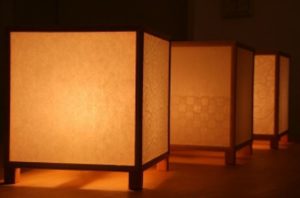5S in the Japanese Workplace (5)—Shitsuke: Sustaining through Discipline
CONTENTS
5S in the Japanese Workplace (5)—Shitsuke: Sustaining through Discipline
The final "S" in the 5S series looks at Shitsuke (sustaining). In a nutshell, it means keeping the previously introduced 4S as your daily routine.
Shitsuke (しつけ or 躾)
Shitsuke is usually written with Japanese hiragana syllables rather than the kanji characters derived from Chinese. The kanji has the symbol for “body, self, soul or mind” on the left side, and the symbol for “beauty” on the right. It means “training or discipline,” as in child-rearing or discipline in schools, but it also means “self discipline,” or internalized, self-motivated discipline. Discipline from the outside should gradually and naturally transform into self discipline as a person matures. Discipline then becomes a continuous practice or a state of being.
Childhood Training
In Japanese schools, teaching children self control is as important as teaching academic content. Taking turns, cooperation and looking out for the needs of others before oneself are constantly reinforced. Selfish behavior and looking out for oneself at the expense of others is punished by social disapproval. In addition, consensus-building is practiced at school and in social activities. In situations where Americans might need to resolve who is the leader or whose idea is best before any action can take place, the Japanese are able to mobilize and form a consensus relatively quickly.
Sustainability

Setting shoes in order in Japan is commonly trained among kids.
In the 5S workplace, shitsuke means following the processes that have been determined by the first 5S activities—sorting, organizing, cleaning and standardizing—on a regular basis, not just when things start getting out of hand. This is accomplished by scheduling, checklists and evaluations. Scheduling ensures that tasks are performed regularly. Checklists that describe in detail the required tasks are posted and actively checked off every time. Tasks are assigned to individuals, but everyone is collectively responsible to make sure all tasks are completed. In addition, periodic evaluations of progress are carried out by supervisors. The purpose is the constant practice of good habits and the elimination of bad ones.
Communication
Communicating processes is not that easy. Sometimes language is not enough. The safety instruction says, “Stand at least 50cm from the machine.” The sentence itself is clear, but not everyone has a sense of 50cm. Therefore, as a visual clarification and reminder, a tape marking is placed on the floor 50cm from the machine, letting everyone know what areas are unsafe. Communication discipline means using language that is clear, and checking that people have understood properly. It means using visual communication as well as verbal.
Leaders Model Good Behaviour
After the earthquake of 311 in 2011, Prime Minister Kan and the members of the Japanese cabinet changed from their usual business suits to the work uniforms usually seen in factories. This expressed their determination to work to get the situation under control. Government spokesman Yukio Edano made his televised statements in an apparent constant state of exhaustion. Similarly, in a Japanese workplace, everyone, even the executives, are expected to pull together and do what needs to be done in an emergency.
Voluntary Self-restraint
During the height of the pandemic, bars and restaurants saw a severe drop in their business. Even Japanese who were not directly affected felt that they could not feel good about enjoying themselves while others were suffering. Most people restrained from panic buying of staples such as toilet paper, even though many were anxious about those items becoming in short supply.
Common Sense

Most offices in Japan are clean and tidy.
Shitsuke means that once processes and attitudes are internalized, workers voluntarily carry out the 5S activities without having to be reminded. It should not be necessary to reward workers to perform their assigned tasks, or discipline workers for not doing them. Workers should continue to practice the activities even after moving to different work areas. Shitsuke means not just following the rules, but using the brain to recognize and respond appropriately to 5S challenges. It means using common sense.
Sometimes American companies ask me to come to their offices to help them prepare for visits from prospective customers. They want to know how to spruce things up to impress the Japanese. Usually they ask for advice about taking down cubicles or making other modifications. When I get there, I am often surprised to find the trash can in the conference room full of empty coffee cups, the smell of popcorn filling the office area or dust on desks and office equipment. To Japanese, finding and eliminating eyesores is “common sense.” There is no need to hire a consultant to tell them they need to empty their trash.
Putting Shitsuke into Practice
Fortunately, most of us will never be called upon to practice the painful discipline of the victims of the Great East Japan Earthquake. However, we can keep shitsuke and “common sense” in mind when we work with the Japanese. Without the S of Shitsuke, even the most carefully constructed systems of the first 4 S—Seiri (sorting), Seiton (organizing), Seiso (cleaning, shining) and Seiketsu (standardizing, sanitizing)—cannot be sustained for long. By following the processes consistently and looking for and eliminating eyesores proactively, we can work more smoothly with the Japanese and enjoy a more productive work environment.
- Categories
- 5S, About Japanese companies and Japanese business people, and 未分類
- Tags
- 5S in English


